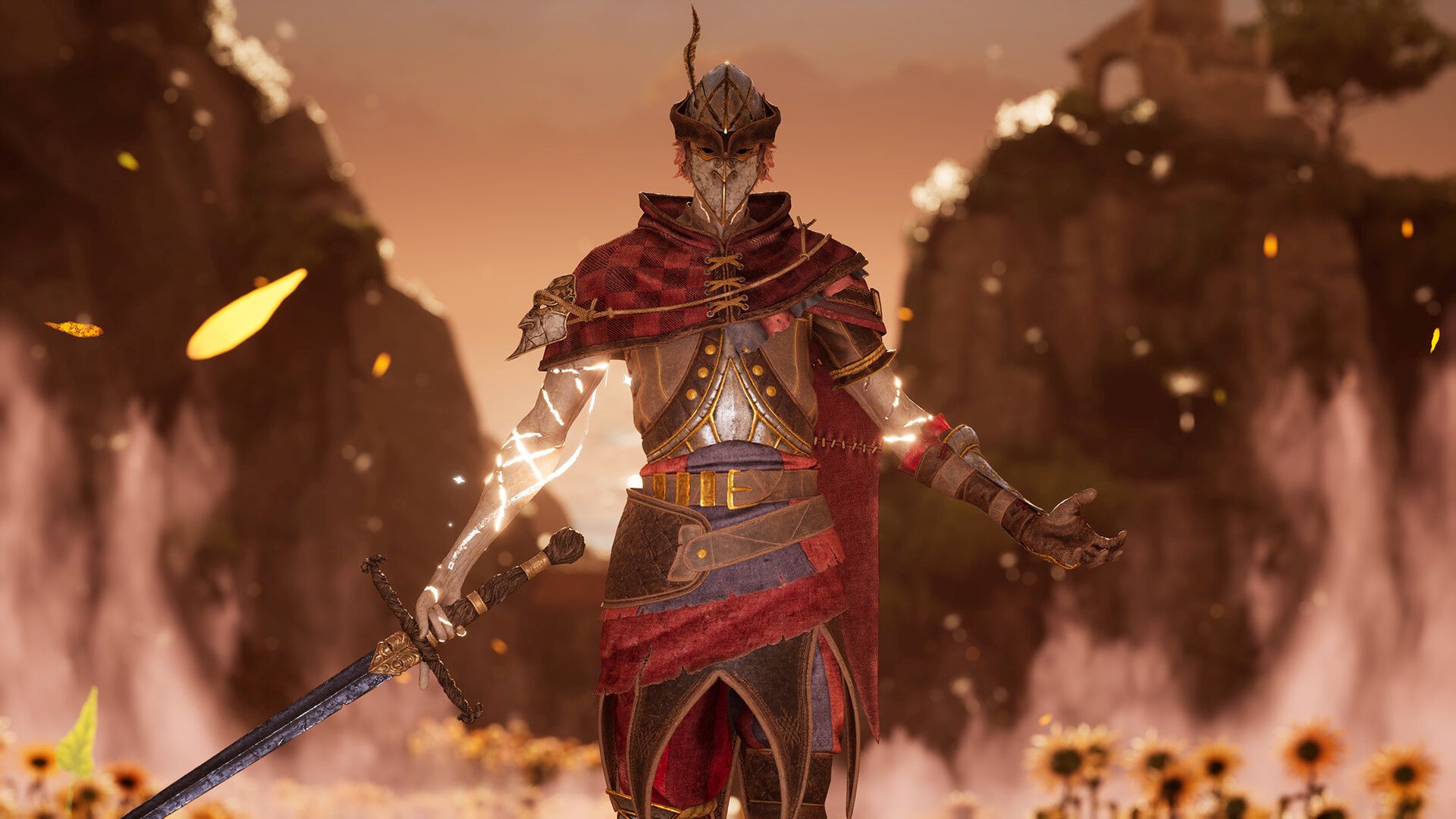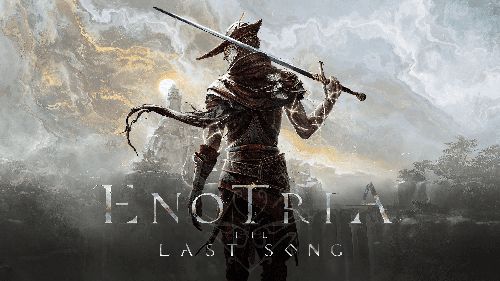Enotria: The Last Song Review
Soulslikes are like pasta. Pasta comes in many forms and can be dressed up in a lot of different ways. In the end, though, the delicious dish in front of you is sauce, noodles, and whatever else was added to make it stand out. Enotria: The Last Song is a new Soulslike, and you can almost smell the garlic-infused tomato sauce cooking in the Italian countryside where some of the game takes place. That Mediterranean setting is important and one of the ways in which Enotria plays its particular tune.
Describing the ways in which Enotria: The Last Song hews to, or departs from, the Soulslike formula is maybe the laziest and hacky-est way to approach a review. But as a subset of the action RPG genre, Soulslikes are by definition formulaic. How Enotria colors outside the lines drawn by FromSoftware’s revered design philosophy is key to understanding the game and where it shines or fails. So please excuse my shorthand.
Make no mistake, Enotria: The Last Song does have some ideas of its own. Its setting, narrative, and art style, for example. The way it dresses up its combat mechanics is another. Let’s discuss.
Enter Stage Right
Taking Shakespeare’s “all the world’s a stage” metaphor to heart, Enotria spins its narrative around a world controlled by powerful, evil playwrights. All the men and women are merely players, as Shakespeare would say. Gripped by the Canovaccio, they’re doomed to endlessly repeat their lines until the player frees them. Like an actor, your character is nothing without a costume and mask, which become key to combat. It also takes away the need for a character creator.
I’m greatly simplifying and paraphrasing the game’s narrative arc, of course, which is filled with complication and probably much more opaque than it needs to be. But impenetrable stories are frequent visitors to Hotel FromSoft, so I’m not really faulting Enotria here. The narrative premise generates some cool ideas, like NPCs on a makeshift stage rehearsing their lines ad nauseum, or bosses with a theatrical bent. References to Italian folklore, music, commedia theatre, and opera are everywhere, which is genuinely unique. On the other hand, the game’s relatively small company of decently voiced NPCs didn’t leave much of an impression.

Sunshine on My Shoulders Makes Me Happy
Much digital ink has already been spilled praising Enotria’s relatively sunny and color-drenched setting art. It’s indeed a welcome change of pace to play a Soulslike that isn’t grim, dark, or under the spell of Dungeons, Dragons, or Arthurian legend. Enotria spends plenty of time in the shadows, too, though they’re saturated with glowy color. Still, while Enotria’s art direction is high concept, its execution comes with some jank, a lack of textural detail, and a need for a bit more polish to its human characters. While Enotria’s combat sounds and environment audio are fine, the game’s musical score is rich and varied. It’s in tune with the game’s Italianate vibe.
All the narrative complexity and unique visuals don’t matter in a Soulslike if combat and action aren’t compelling. It’s here that Enotria clearly wants to innovate. It’s also where I think it most seriously loses its way. All the basics of the formula are there: heavy and light attacks, stamina management, healing flasks, and bonfire-like checkpoints. You know the list. Like several recent Soulslikes — for example, Black Myth, Wukong — Enotria dispenses with blocking as a mechanic. Black Myth focuses on dodging. Enotria leans into parrying the enemy. However, perfect parries do nothing to stagger an enemy in the moment. Instead, they help fill up a meter that allows the player to use special attacks. Enotria calls them lines (as in “learn your lines”). Using the lines opens up enemies to taking the most effective, potent damage. Special attacks tied to some sort of cool-down or meter-filling mechanic are nothing new. But in Enotria, the lines are only one aspect of a very large repertoire of combat complications.

Learning Curve
At the core of Enotria’s combat machinery are up to three loadouts, each of which is based on a stat-boosting, class-like mask, contains up to two switchable weapons, a gem that impacts parries, four magic lines, and a wide range of buffs. While some games allow players to reconfigure gear on the fly, Enotria only allows changing things up at checkpoints. This makes mid-boss-fight tactical shifts more challenging.
Bosses and many normal enemies have powers keyed to four elements and colors: White (gratia), Red (fuoto), Fuschia (viz), and Green (mallano). Likewise, the player’s weapons and spells can have rock-paper-scissors-like counters to them. Understanding the system is critical. Without using the correct counter-weapon or line, many bosses simply won’t go down. Unfortunately, thanks in part to the terms — which at first sound meaningless and arbitrary — and poor onboarding, it takes some time for the systems to click. And let’s not forget the game’s complex skill tree, a belt full of consumables and weapon upgrades, all keyed to random drops or purchased with souls-like currency.
On top of all that, the game has over 100 weapons, dozens of masks, over 60 upgrades, and, as the developers note, “over 30 ways to alter your character dynamically.” It’s a lot. I really admire Enotria: The Last Song’s attempt at adding depth to Soulslike combat. However, when I previewed the game last May, I felt like its systems were overly complex and not well explained. I still do. For me, the convoluted web of mechanics and arcane vocabulary actually get in the way of fun.
Practice Makes Perfect
Once everything is clicking and the stage is set, combat in Enotria: The Last Song ranges from pretty good to impressive. Aside from some awkward animations and repetitive low-level enemies in each of the game’s three main regions, bosses and weapons feel appropriately varied. Lines/spells have impact. The all-important parry timing is relatively forgiving. On the negative side, dodging is nearly useless and healing is slow. The healing animation is easily interrupted which can be very frustrating in a boss fight.

Soulslikes often feature level designs filled with shortcuts and secret areas, and Enotria is no different. The game includes a gimmicky mechanic that allows the player to magically change the environment in certain locations, but it feels a bit tacked on. Some bosses are skippable, a fact that the game is loathe to articulate via its level design.
Add It to the List
Enotria: The Last Song’s delightful setting, theatre-infused narrative, and mechanical depth help it stand out from the very crowded Soulslike landscape. On the flip side, that depth translates to sometimes poorly explained, unnecessary-feeling complications. Strip all that away, and Enotria: The Last Song is still an enjoyable action RPG that should appeal to almost every fan of the genre.
***PC code provided by the publisher for review***
The Good
- Refreshing setting and art
- Interesting narrative
- Engaging Soulslike combat
The Bad
- Systems are overly complex
- Some bugs and crashes
- Janky animations

